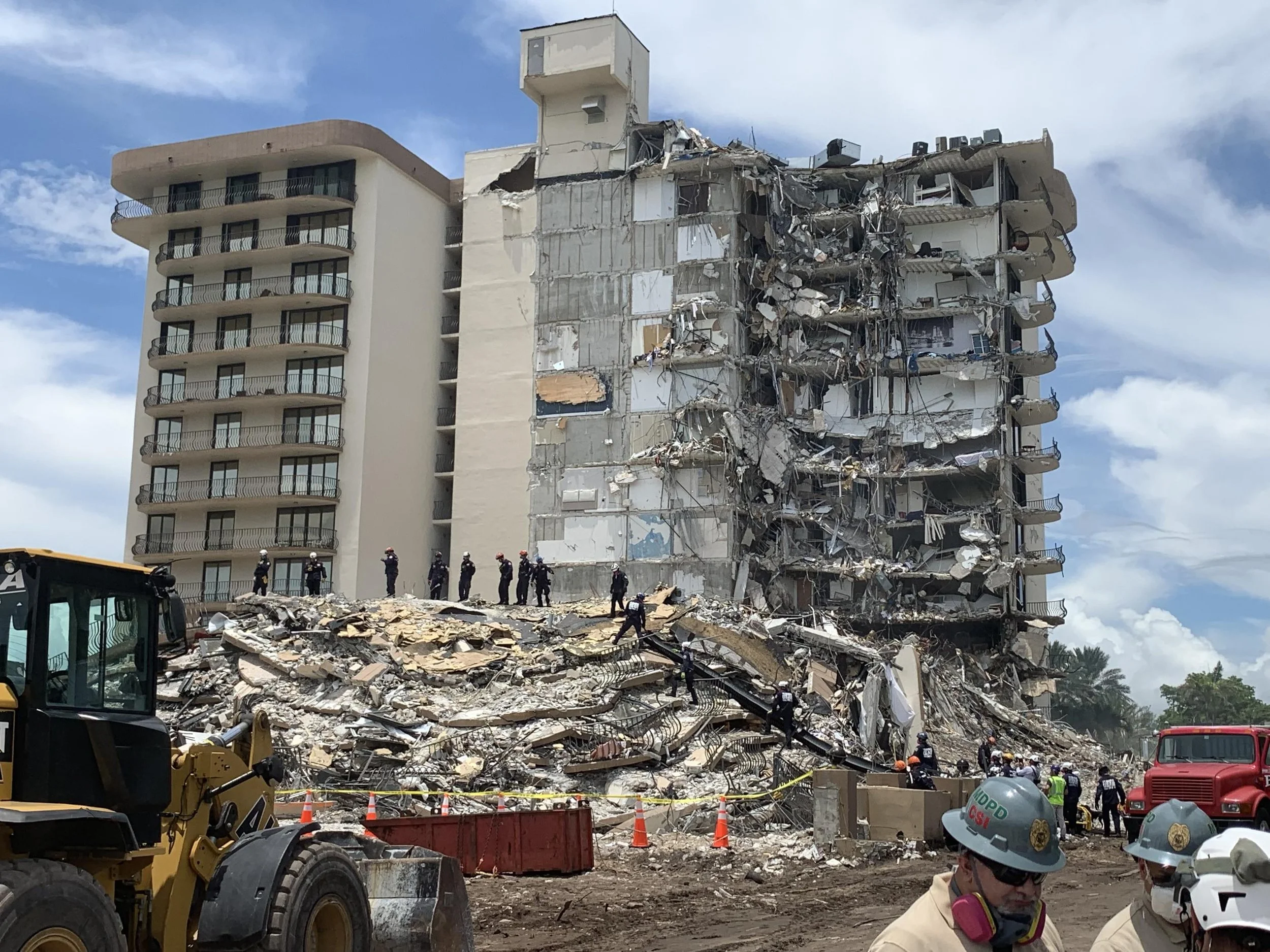Investigating the Champlain Towers Collapse
Event: In the early morning hours of June 24, 2021, the 12-story Champlain Towers South condominium in Surfside, Florida, suddenly collapsed, killing nearly 100 people in what became one of the deadliest engineering failures in U.S. history. With no obvious cause for the abrupt structural failure, the National Institute of Standards and Technology (NIST) was tasked with leading the complex federal investigation to answer the urgent question: Why did it happen?
Action: Immediately following the disaster, NIST requested a deployment from the RAPID Facility, recognizing its unique capabilities in post-disaster reconnaissance. Through a quickly drafted memorandum of understanding between NIST and NSF, the RAPID team deployed within 24 hours, arriving in Miami with a comprehensive suite of advanced instrumentation—including high-resolution lidar scanners, seismometers, and accelerometers. The team faced multiple challenges: racing against time to capture perishable data before it was lost to recovery efforts, and adapting their mission when tropical storm Elsa forced an accelerated demolition of the tower's remaining section.
Data & Discovery: With the approaching storm forcing an urgent timeline change, the team's priority shifted to creating a complete, three-dimensional digital model of the structure before it was demolished. Working around the clock, operators conducted high-resolution lidar scans using half-hour scan intervals that provided sufficient detail to image key structural components. As rescue teams systematically removed debris, the RAPID team scanned each newly exposed layer, preserving critical evidence of the collapse sequence. The team also gathered crucial baseline data by deploying seismometers and accelerometers on the nearby Champlain Towers North to measure its vibrational response to heavy equipment, creating reference data for validating future computational models of the collapse.
Impact: The extensive volume of high-quality 3D lidar data collected by the RAPID team serves as primary evidence for NIST's ongoing federal investigation. These detailed digital models and vibration datasets enable investigators to create and validate collapse simulations, helping to identify the specific engineering failures that led to the tragedy. Beyond data collection, RAPID personnel trained the NIST team on-site in advanced data collection techniques, empowering them to continue comprehensive documentation with RAPID equipment long after the initial deployment. The scientific insights generated from this data will directly inform the future of structural engineering and building safety, with investigation findings expected to lead to significant updates in engineering practices, building codes, and inspection protocols for aging structures nationwide—helping to minimize the likelihood that disasters of this kind will occur again.

